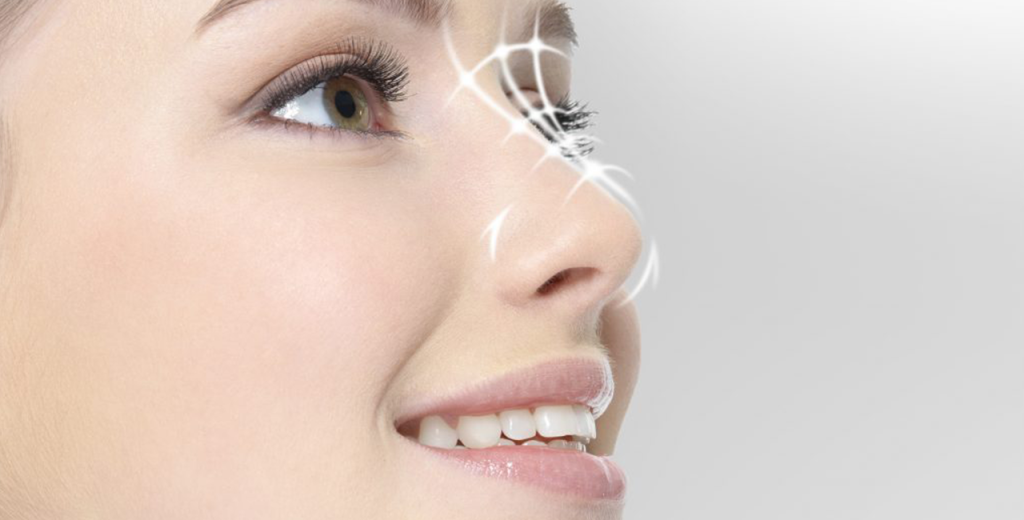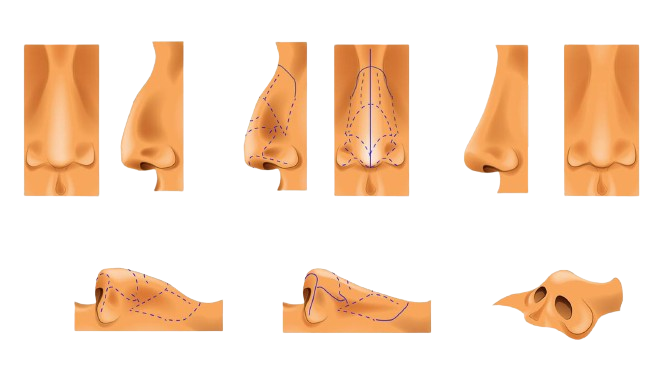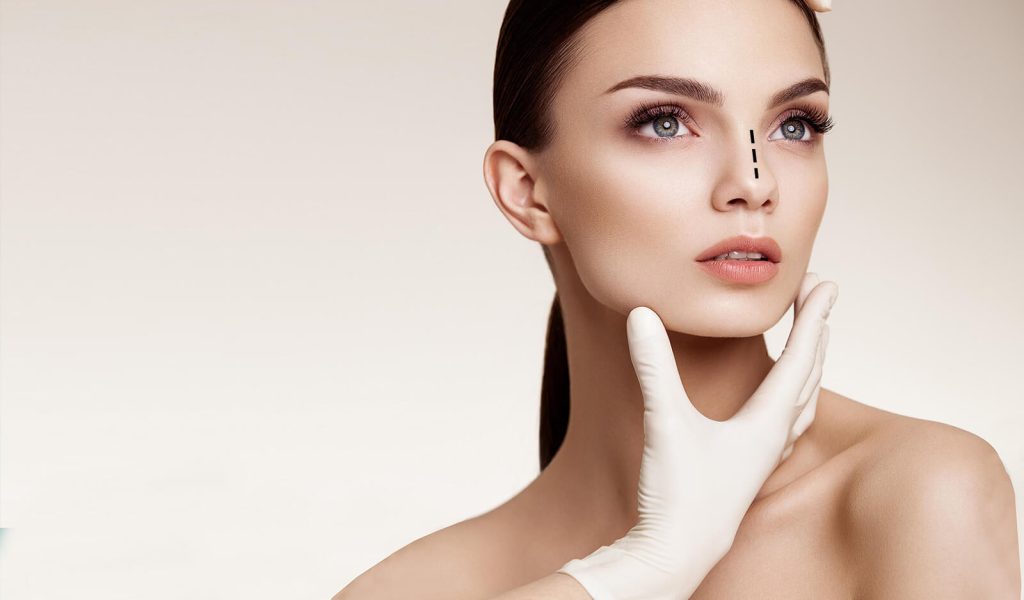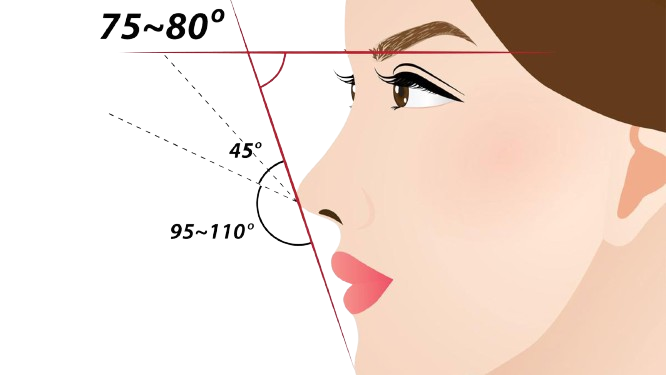Natural Nose Surgery: Everything You Need to Know
Natural rhinoplasty is one of the most popular types of cosmetic procedures. Join Dr. Benyamin Rahmati to learn about the latest techniques in this surgery.
Natural nose surgery is a type of rhinoplasty. This procedure aims to meet defined aesthetic standards by correcting both the external shape and internal function of the nose. Natural rhinoplasty combines modifications to the nasal septum, bridge, and tip.
It is considered one of the most complex types of rhinoplasty, as it must enhance appearance while preserving the nose’s natural function. Based on the surgeon’s decision, it can be performed using either the open or closed technique. To learn more about this type of rhinoplasty, continue reading this article by Dr. Benyamin Rahmati.
What Is Natural Nose Surgery?
Natural nose surgery is one of the most popular forms of cosmetic procedures. Common modifications in this surgery include reshaping the nasal tip, reducing nostril size, removing the dorsal hump, narrowing the bridge (upper bony part), and improving the overall appearance.

In this type of rhinoplasty, the surgeon not only improves the nose’s appearance but also addresses functional issues. This includes treating breathing problems and nasal valve stenosis, relieving sinus issues and chronic headaches, removing nasal polyps, and even making changes to the palate to eliminate snoring.
To fully understand the corrections made in natural rhinoplasty, it’s essential to first become familiar with the defined standards and criteria for a natural-looking nose.

The nose sits at the center of the face, making its size and proportion highly influential on overall facial beauty. Researchers have analyzed the faces of individuals commonly considered attractive and defined a set of measurable standards and proportions that characterize a beautiful, natural-looking nose. These include:
After considering size and position, we move on to the angles of a natural nose.
Each of these angles falls within a specific range, as facial shapes vary among individuals. The exact and ideal angles for your face should be determined by the surgeon through 3D imaging.

After the standards related to the size and location, we should go to the angles of the natural nose model:
All these aspects have a limit; Because the shape of the face varies from person to person. The precise and appropriate angles of your face must be determined by the surgeon using 3D imaging.

The angle between the natural nose and the upper lip (in side view) should be between 95°–115° in women and 90°–95° in men.
The angle between the nose and the forehead (profile view) should range from 115°–130°.
The angle between the chin and the tip of the nose should be around 120°–132°.
Who Can Undergo Natural Nose Surgery?
Generally, nasal growth and development complete around ages 16–18 in boys and 14–16 in girls. Based on this, individuals over the age of 18 are usually eligible for natural rhinoplasty to enhance their facial beauty.
However, certain medical conditions may prevent someone from undergoing any type of surgery. For these individuals, the risks outweigh the benefits. Medical conditions that may disqualify someone from rhinoplasty include:
- Hemophilia
- Blood clotting disorders
- Undergoing chemotherapy
- Use of blood thinners
- Keloid formation or excessive scarring
Natural rhinoplasty typically involves the following steps:
Preoperative Preparations
In natural rhinoplasty, both structural and functional issues are evaluated to determine necessary changes. First, the surgeon uses precise measuring tools to assess the external structure of the nose, followed by an internal examination.
The internal assessment involves checking the nostrils, nasal valves, and the presence of polyps. For greater accuracy, the surgeon usually orders imaging such as X-rays of the nose and face. After that, 3D scanning is used to simulate a nose shape that best matches your facial features.
At this stage, the surgeon will consult with you to understand your preferences and expectations for your nose shape. Once the final form is confirmed, a surgical plan is made to address the required modifications.
Surgery in the Operating Room
On the day of surgery, your blood pressure and vital signs are checked before you’re taken into the operating room. The type of anesthesia is chosen based on the duration of surgery, your health condition, and the preferences of both you and your surgeon. If only minor changes are needed, local anesthesia may be used; otherwise, general anesthesia is recommended.
Along with general anesthesia, a local anesthetic is injected into the entire nasal area. Once full numbness is achieved, the necessary incisions are made. The surgery can be performed using either open or closed techniques. The surgeon selects the appropriate method based on the required changes and their own expertise. After making the incisions, structural and aesthetic corrections begin.
Common Corrections in Natural Rhinoplasty:
Septum and Bridge Correction
One of the most challenging and essential parts of natural rhinoplasty is correcting the nasal septum. This step requires a high level of surgical expertise, especially in bony noses or those with a prominent hump. In such cases, the open technique is usually preferred. The nasal bridge is opened, and the dorsal hump is removed. Finally, based on the 3D model, the bridge is reshaped and refined.
Tip Correction
After the septum, the next step is reshaping the nasal tip. In most cases, the tip needs to be reduced, which involves removing excess fat and soft tissue. For patients with a drooping or bulbous tip, the surgeon may use a cartilage graft to support and lift the area. This graft is usually harvested from the back of the ear. In some cases, the surgeon may opt for a silicone implant instead of a cartilage graft.
Other steps in natural rhinoplasty may include resizing the nostrils and alar base, removing nasal polyps, correcting septal deviation, and addressing any functional issues.
Once all corrections are complete and the desired nasal shape is achieved, the incisions are sutured. A nasal splint is placed to support the septum, followed by a medical cast over the nose. You are then transferred to the recovery room. After regaining consciousness, you will be moved to your hospital room. In most cases, an overnight stay is required.
Post-Operative Care After Natural Rhinoplasty
It usually takes 4 to 6 weeks for the initial swelling and bruising to subside. Final results become visible around 12 months after surgery. For those with bony noses, swelling may persist for up to 18 months.
In such cases, the surgeon may use steroid injections to control the swelling. During the first few days after surgery, you may feel nasal congestion or blockage, which typically resolves gradually.
The most important post-operative care instructions for natural rhinoplasty include:
- Keep your head elevated above heart level for 6 weeks after surgery
- Avoid bathing for one week
- Visit your surgeon after one week to remove stitches and check the healing process
- Take all prescribed medications including antibiotics and painkillers exactly as instructed
- Avoid strenuous physical activity for two weeks
- Refrain from smoking or using hookah until your surgeon permits
- Blowing your nose after stitch removal is okay; for cleaning, use sterile saline solution
Does Natural Rhinoplasty Have Side Effects?
Like any surgical procedure, natural rhinoplasty—despite its many benefits—may involve some side effects. The most common potential complications include:
Anesthesia Risks
Severe allergic reactions, breathing difficulties, and blood clots are among the most significant complications related to anesthesia.
infection
The risk of post-operative infection is greatly reduced with the proper use of antibiotics prescribed by your doctor.
hematoma
There is also a risk of bleeding after natural rhinoplasty. Severe swelling and skin discoloration may indicate a hematoma.
Loss of smell
In very rare cases, patients may experience a reduced or complete loss of their sense of smell after surgery..
Dissatisfaction with Results
In some cases, patients may not be satisfied with the outcome of their natural rhinoplasty and may consider undergoing a revision surgery.
All of the side effects mentioned above are directly related to the skill of the surgical team. If the surgeon is not familiar with nasal anatomy, they may damage nasal function, sense of smell, the palate, or even important facial nerves. That’s why an ENT (ear, nose, and throat) surgeon is the most qualified specialist for natural rhinoplasty.
Dr. Benyamin Rahmati is an ENT surgeon with extensive experience in performing cosmetic procedures. You can visit his clinic to book a consultation and schedule your surgery.



